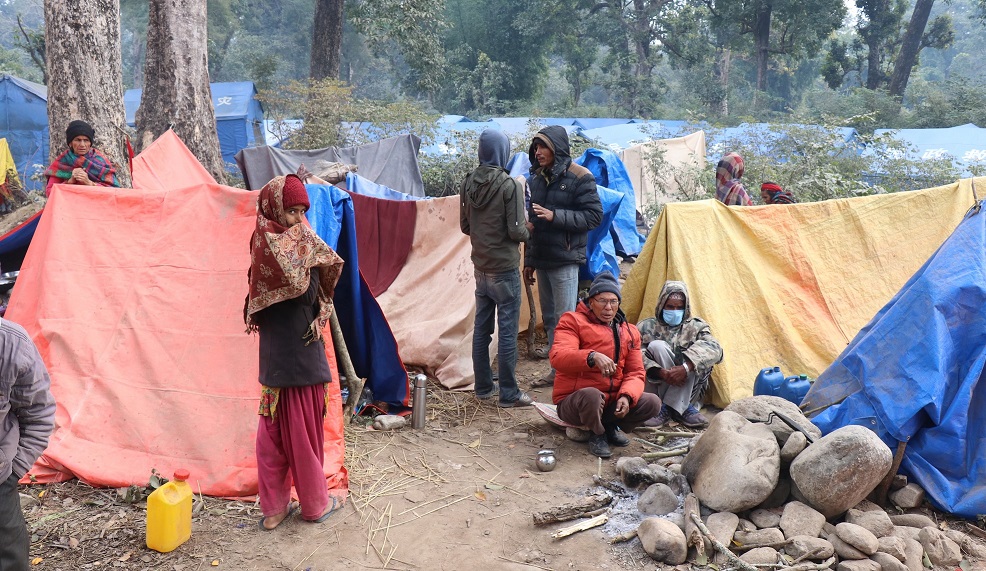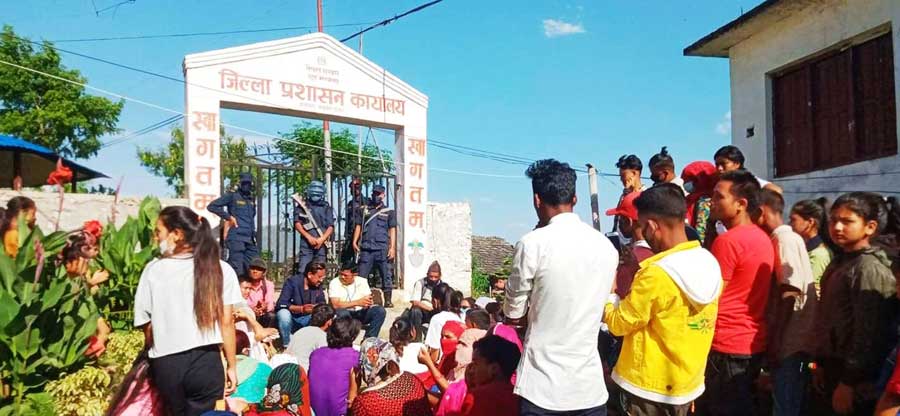PET/CT imaging, an essential means for cancer management: where we are?
Yugnepal 570 पटक पढिएको
Cancer can be treated if diagnosed accurately at the early stage but it becomes difficult to cure when diagnosed in the advanced stages. We have very few dedicated cancer care hospitals in Nepal, which have been providing treatment of various cancers diagnosed by histopathology and anatomical imaging modalities like CT, MRI. Unfortunately, these centers are still not equipped with advanced nuclear medicine and molecular imaging facilities such as PET/CT and SPECT/CT, which are now proved to diagnose different type of cancers more accurately in their primary stage. Recently, very few government and private hospitals have started nuclear medicine facility with gamma camera imaging that has really helped doctors to diagnose and treat cancer more effectively. Furthermore, there was a paradigm shift in diagnostic imaging in Nepal after the installation of first ever PET/CT scanner by a private center in 2016.
One of the most striking advancements of medical imaging has been the introduction of Positron Emission Tomography (PET), which has been used clinically since early 1980s to diagnose cancers and many other complicated diseases of brain and heart. PET scanner looks very similar to CT scanner but it is actually one of the most complicated and expensive medical imaging modalities. Unlike the use of X-rays in CT, PET uses “positron-emitting radiotracer”, a special kind of medicine that needs to be injected to the patient before imaging. PET scan is especially known for providing functional information of disease, which other anatomical imaging modalities like CT and MRI cannot do in many cases. In the year 2000, scientists further combined PET with CT as a hybrid PET/CT scanner to take the advantage of both anatomical and functional information obtained from PET/CT fused images. Since a hybrid PET/CT scanner provide both functional and anatomical details simultaneously, it helps to diagnose exact site and nature of cancers in their early stage.
As mentioned above, the essential requirement of PET/CT imaging is positron-emitting radioisotopes such as F-18, C-11, O-15, N-13 etc. These PET radioisotopes are produced from Cyclotron, a cyclic charge particle accelerator, which is very complex and expensive equipment. The PET radioisotopes are further labeled with different chemical substances to prepare “radiotracers” according to the disease need to be diagnosed. For example, 18F-fluorodeoxygluocose (18F-FDG), which is the most widely used radiotracer to diagnose various cancers and other metabolically active diseases.
Once the radiotracer is injected to a patient, it decays and emits positrons (positive electrons emitted from Nucleus of an atom) which finally annihilate with electrons in its close vicinity and converts into two highly energetic annihilation photons. A qualified “nuclear medicine technologist” sifts the patient (injected with PET radiotracer) inside the PET/CT scanner to perform whole-body PET/CT imaging. During PET acquisition, the annihilation photons emitted from a patient are captured by the highly sensitive PET detectors to generate 3D tomographic images of whole body. CT images are also acquired after PET acquisition. Finally, the PET and CT images are fused to diagnose the disease by the qualified “nuclear medicine physicians”.
Since more than a decade, PET/CT has become essential imaging modality of every cancer hospitals and referral centers because of its exceptional diagnostic capabilities. The main advantages of PET/CT includes assessment of the extent of disease prior to initiation of treatment (Staging), assessment of treatment response during or after therapy (Response Evaluation), assessment of the extent of disease following initial therapy or when recurrence has been confirmed (Restaging) and the probability of recovery or survival (Prognosis). According to the published data, when a PET study is used in the diagnosis of cancer patients it can cause changes in therapeutic decisions in 30% to 40% of the cases. The introduction of FDG-PET has changed the therapeutic approach to the patients with non-small lung cancer (NSCLC) and played a major role in the initial evaluation of other tumors such as lymphomas, neuroendocrine tumors (NET), carcinomas of nasopharynx, uterus, cervix and gastrointestinal stromal tumors (GIST). It is also currently used for the detection of distant diseases in head and neck, colorectal, ovarian as well as in locally advanced breast cancer and melanoma. In addition to its role in cancer diagnosis, its use has now been exploited in pre-clinical and clinical research for the drug development and in the diagnosis of neurodegenerative (Alzheimer’s and Parkinsonism disease) and cardiovascular diseases.
The half-life of the clinically used PET radiotracers are very short that ranges from few minutes to few hours (~2 hours for F-18). In other words, these radiotracers start decaying immediately after the production and their activity becomes half in one half-life. For example, in case of 18F, its activity becomes half in nearly two hours after the production from cyclotron. Therefore, the cyclotron should be installed onsite or in the close proximity of the PET/CT scanner so that the radiotracers produced can be supplied quickly and smoothly to the PET/CT facility. As the installation cost of even “low and medium energy cyclotron” is very high, it is quite not possible to install a separate cyclotron at every PET/CT centers. However, it may not be difficult to install a PET/CT at every tertiary care hospitals of Nepal. For the small countries like Nepal, only one or maximum two cyclotrons of optimum energy may be sufficient if installed at the appropriate locations which are connected by domestic airports. The produced radiotracers with adequate activity can be supplied easily to all the PET/CT centers in the country by the flights. The only one private PET/CT scanner of Nepal was installed without cyclotron and hence the radiotracers (18F-FDG) are being procured from India, which has resulted in the increased cost of PET/CT scan by almost two times.
In addition to the PET/CT, other advanced multimodal imaging such as SPECT/CT and PET/MRI have now become the routine investigations for cancer treatment in the developed countries. Unfortunately, the qualified oncologists and surgeons in Nepal are still facing difficulties in providing state-of-the-art treatment to cancer patients because the absence of cost effective PET/CT and other nuclear medicine and molecular imaging facilities. In our country, most of the patients are diagnosed with cancer in the advanced stages when the metastasis to the other organs have already occurred. In these circumstances, it is almost impossible to treat patients with the existing treatment modalities. Although the PET/CT service has been started in Nepal, the operating cost is very high because of unavailability of cyclotron in the country. As a result, hundreds of patients are still being compelled to visit India every month to get PET/CT service in lower price. Government of Nepal had announced and sanctioned the budget to install a PET/CT along with cyclotron few years back however, it has not come in effect yet. At least a PET/CT with an optimum energy cyclotron must be installed in the government hospital as soon as possible. This will not only stop referral to India and reduce financial burden of patients but also save time that will surely prevent disease from progression and reduce cancer mortality rate in the country.
Dr. Arun Gupta, Ph.D.
Seoul National University Hospital
Seoul, South Korea
Ph.D. Research
PET/CT and SPECT/CT Imaging and 3D Voxel-based Dosimetry in Targeted Radionuclide Therapy
शनिबार १४, भदौ २०७६ ०९:२३ मा प्रकाशित
- धनगढीका सामुदायिक विद्यालयको कक्षा ८ को नतिजा ९ बाट बढेर ३१ प्रतिशत
- कानून संशोधन गरी ०४७ यताका प्रकरणको छानबिन गर्नुपर्नेमा गगन थापाको जोड
- सरकार गठनबारे अन्योल कायमै, नागरिक उन्मुक्तिले नेतृत्व पाउने चर्चा
- नागरिक उन्मुक्तिका संस्थापक रेशमसहित प्रदेश सांसद छलफलमा
- प्रधानमन्त्री प्रचण्डलाई कांग्रेस महामन्त्री शर्माको खुला अपील
- गृहमन्त्रीको राजीनामाको माग लिएर फेरि आन्दोलन शुरु हुन्छ- राजेन्द्र लिङ्देन
- कैलालीका ४ जना युवक लागूऔषधसहित नियन्त्रणमा
- सभामुखले भने– ‘प्रदेश सभाले रञ्जितालाई चिन्दैन, दलको नेतालाई मात्र चिन्छ’
- धनगढीका सामुदायिक विद्यालयको कक्षा ८ को नतिजा ९ बाट बढेर ३१ प्रतिशत
- सरकार गठनबारे अन्योल कायमै, नागरिक उन्मुक्तिले नेतृत्व पाउने चर्चा
- नागरिक उन्मुक्तिका संस्थापक रेशमसहित प्रदेश सांसद छलफलमा
- प्रधानमन्त्री प्रचण्डलाई कांग्रेस महामन्त्री शर्माको खुला अपील
- सभामुखले भने– ‘प्रदेश सभाले रञ्जितालाई चिन्दैन, दलको नेतालाई मात्र चिन्छ’
- काँग्रेसबाट इलाम २ मा खड्का र बझाङमा अभिषेक बने उम्मेदवार








प्रतिकृया दिनुहोस